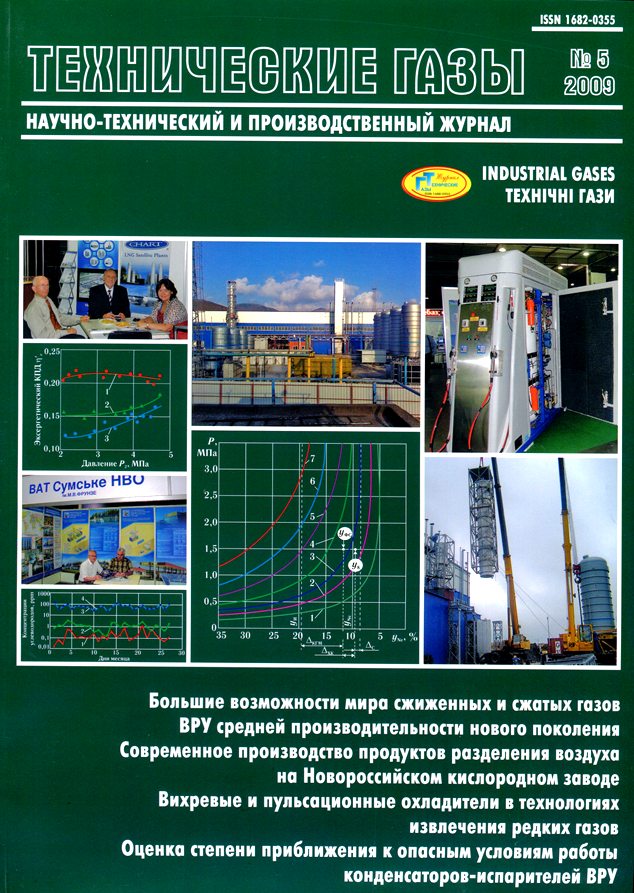DECREASE OF SPECIFIC ENERGY CONSUMPTION DURING MANUFACTURE OF LIQUID OXYGEN IN ASP OF AVERAGE PRESSURE
DOI:
https://doi.org/10.18198/j.ind.gases.2009.0456Keywords:
Air separation, Oxygen, Nitrogen, Liquid oxygen, Air separation cryogenic plant, Expander-compressor unit, Air refrigerator cycle, Two-stage expansion, Compressor step, EfficiencyAbstract
In cryogenic air separation plant (ASP) which intended for reception of gaseous products, the made cold is used for a covering of refrigerating capacity losses. In plants for reception of liquid oxygen the most part of energy (up to 70 %) is spent on manufacture of cold which compensates its loss because of selection of oxygen in liquid type. Therefore the efficiency of liquid ASP depends on profitability of cryogenic thermodynamic cycle used in them. Application of expander-compressor units (ECU) in cycles of such plants allows to increase their power efficiency considerably. On the basis of calculated research of refrigerator cycles of average pressure it is shown that application of effective ECU with two-stage expansion and exert additional pressure on air before expander step of low pressure allows to increase refrigerating factor of refrigerator cycle on 38 % in comparison with Claude's cycle. Specific energy consumption by manufacture of liquid oxygen it is possible to lower on 17,6 %. Application of effective ECU is shown that at constant productivity of plant on a target product allows to reduce pressure of air in a cycle with 6,5 up to 3,1 MPа. Perspectivity of creation of liquid plants is marked on the basis of the offered refrigerating cycle with use only machines of dynamic action.
Downloads
Issue
Section
License
LICENSE AGREEMENT
After receiving an article for publication as required revision scientometric databases each author directs the license agreement on the assignment and transfer of the management of copyright. Signatures of the author (s) it is desirable to seal the personnel department of the institution where the author works (authors), or the seal of the Faculty.
Revision refers to the authors one layout for proofreading. Permissible only those fixes that result in compliance with the layout of the original text of the article. Significant changes are not permitted. Layout should be sent to the editorial office within days of receipt.

